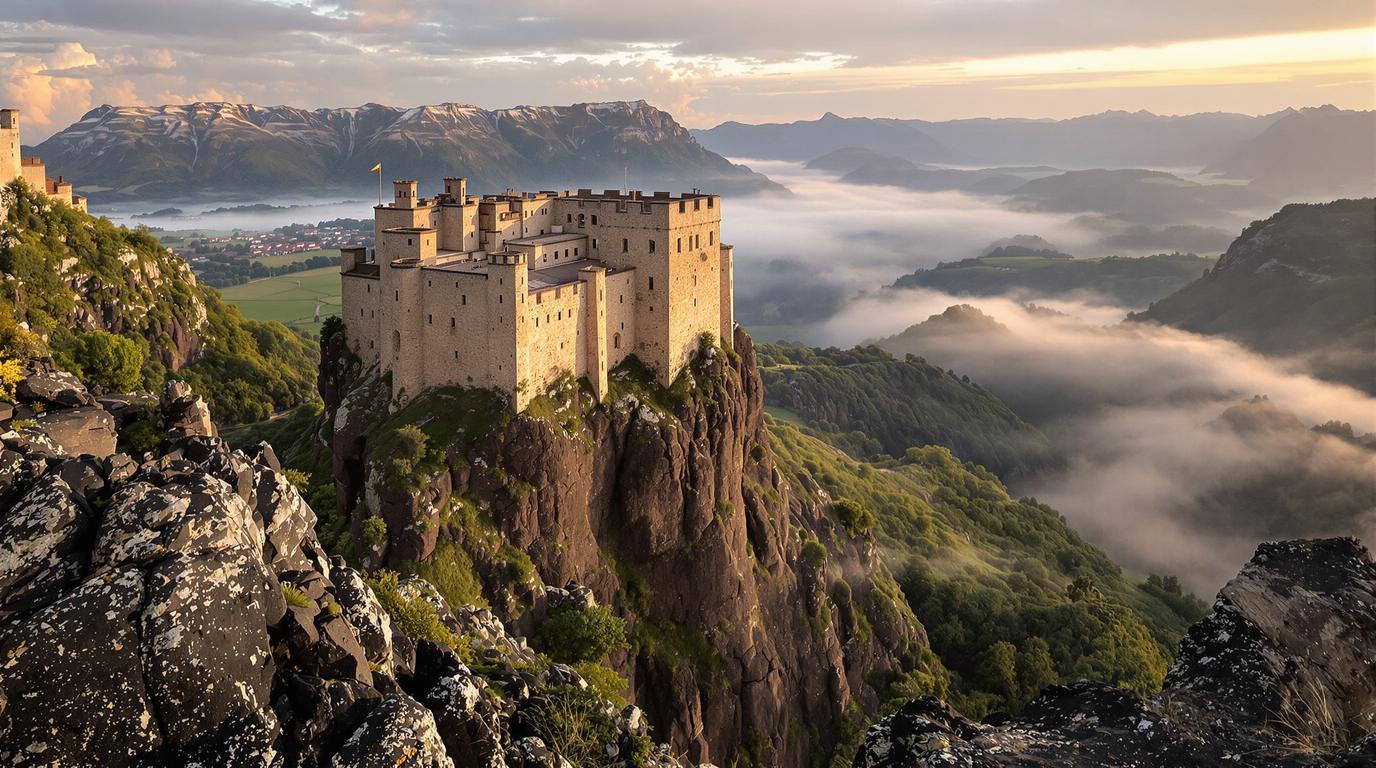Perched atop a volcanic rock in central France stands a fortress so breathtaking it feels plucked from medieval fantasy. The Fortress of Polignac rises 32 meters into the sky, dominating the landscape with 900 years of French history etched into its basalt walls. Unlike France’s tourist-packed châteaux, this hidden gem offers something increasingly rare: authenticity without the crowds.
A fortress that once housed Marie Antoinette’s closest friend
The formidable Polignac family, whose powerful influence stretched back to the 11th century, called this impregnable stronghold home. Their legacy includes the infamous Duchess de Polignac, Marie Antoinette’s controversial confidante who fled during the French Revolution. Walking through these stone corridors, you’re literally stepping through pages of French aristocratic history.
“The Polignac fortress represents one of the finest examples of medieval military architecture in France. Its walls haven’t just witnessed history—they’ve shaped it,” explains local historian Claude Roche.
Stand atop a volcanic plug with 360° panoramas
The fortress sits dramatically atop a volcanic basalt formation, creating a natural defensive position that made it virtually unconquerable. From the 32-meter keep, breathtaking panoramic views unfold across the Velay mountains and the Le Puy basin. Morning mist often clings to the valleys below, creating an ethereal landscape that photographers chase religiously.
For those seeking similar natural wonders, Portugal’s Madeira Island offers wooden cabins perched above the clouds, surrounded by ancient forests that evoke the same mystical atmosphere.
The Oracle’s Well: an 83-meter deep mystery
Perhaps the fortress’s most intriguing feature is its massive well—a 83.5-meter deep marvel carved through solid volcanic rock. Local legend claims it connects to underground passages, and was once used for mysterious oracle ceremonies. During medieval times, the well ensured water supplies during lengthy sieges, making the fortress truly self-sufficient.
Medieval gardens that transport you through time
The recently restored medieval garden offers a sensory journey into the past. Filled with herbs and plants that would have been cultivated during the Middle Ages, it’s both beautiful and educational. The garden’s layout follows historical designs, with medicinal herbs, culinary plants, and flowers arranged in traditional patterns.
For those seeking other immersive historical experiences, Spain’s monastery retreats offer powerful historical connections that similarly bridge centuries of European tradition.
The village that time forgot
Below the fortress, the village of Polignac feels suspended in time. Narrow cobblestone streets wind between stone houses, many dating back hundreds of years. Local bakeries still use traditional methods, and the 11th-century Church of Saint Martin houses remarkably preserved 12th-century frescoes that few tourists ever see.
“Our village operates on a different rhythm than the rest of France. Here, we measure time in centuries, not minutes,” says Marie Durand, whose family has lived in Polignac for generations.
How to experience Polignac without the crowds
Visit between mid-February and mid-November, with September offering ideal weather and thinner crowds. Early mornings provide magical light for photography as the sun illuminates the basalt walls. Consider combining your visit with a dawn hot air balloon ride over nearby Provence for an unforgettable French countryside experience.
The nearest city is Le Puy-en-Velay, just 5 kilometers away, making Polignac easily accessible yet remarkably peaceful compared to other car-free European villages that have gained popularity in recent years.
For a truly unique experience, visit during the changing tides of seasons. Much like France’s tide-transforming archipelagos, Polignac’s appearance shifts dramatically with seasonal changes—golden autumn light on ancient stone creates a photographer’s paradise unlike anywhere else in central France.
Standing atop these ancient walls, watching sunset paint the volcanic landscape in amber hues, you’ll feel something increasingly rare in our hyper-connected world: a genuine connection to history that remains beautifully, refreshingly authentic.
